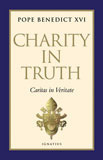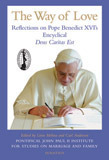Carl E. Olson's Blog, page 190
October 19, 2012
The Return to Rome, Five Years Later
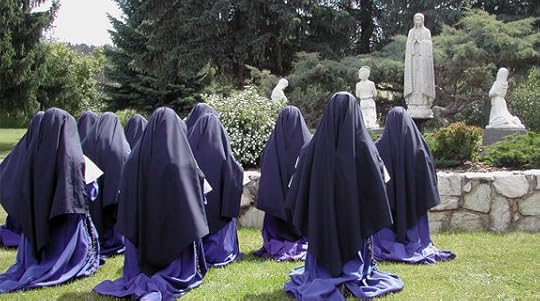
The Return to Rome, Five Years Later | Jim Graves | Catholic World Report
Former sedevacantist nuns reflect on their joyful return to the Church and on their lives in a thriving new religious community.
Five years ago, a
major change came to the lives of Sister
Mary Eucharista, a member of the Religious Congregation of Mary
Immaculate Queen (CMRI), and 14 of her fellow sisters living at Mount St.
Michael (“the Mount”) in Spokane, Washington. Bishop Mark Pivarunas, the Superior General of the CMRI organization,
told the sisters they had to leave the community if they did not stop promoting
“heterodox” views among the other 35 sisters.
But their
“heresy” was not the kind American Catholics have seen in some communities of nuns
in recent generations. Sister Mary Eucharista and her sisters were asked to
leave because they had come to believe that Pope Benedict XVI was indeed the
legitimate head of the Roman Catholic Church.
The CMRIs were
initially founded in 1967 with approval of Church authorities, but went on to
embrace sedevacantism, separating
themselves from the Church. As sedevacantists, they do not accept the
legitimacy of any of the popes since the close of the Second Vatican Council.
“I feel a deep
love and compassion for my former community,” Sister Mary Eucharista, 52, says
today. “They will always be special to me. But while I understand them, I can
never go back unless they return to full communion with the Church.”
Guitars and bongo
drums
Sister Mary
Eucharista was born in Southern California into a pious Catholic family. They
prayed the Rosary together and often went to daily Mass. But the close of
Vatican II brought major changes to her parish, St. John the Baptist in Costa
Mesa. Guitars and bongo drums suddenly appeared at Mass, altar rails and
statues were removed, and catechism teachers began publically denying Catholic
teachings such as the existence of purgatory and the Assumption of Mary. One
day, her mother noticed a holy water font was empty. She told a parish priest
and he responded, “Fill it up with water and bless it yourself.”
October 18, 2012
Jesus in the Gospel of Luke
Jesus in the Gospel of Luke | Christoph
Cardinal Schönborn | Introduction to
Jesus, The Divine Physician: Encountering Christ in the Gospel of Luke
A few years ago, within the framework of an ecumenical celebration and
dedication, I was able to visit the new operational center of the Workers'
Samaritan Association in Vienna.
The Workers' Samaritan Association (no connection with the British Samaritans)
is a kind of local Red Cross with a clear commitment to social democracy. For a
long time, Austrian Socialists were reputed to be-and many of them were-critical
of the Church, or even opposed to her. That was part of the sad heritage of the
[image error]
division in our country [Austria] that led in 1934 to a brief but violent civil
war. The tragic division of the country into "blacks" and
"reds" played no small part in the illegal rise of the
"browns", the National Socialists [Nazis], which ended with the Anschluss, the annexation of Austria [to Germany]. The
picture of the crucifixion that hung in the archbishop's palace in Vienna
(shown on the cover of this book) and that was vandalized by fanatical Hitler Youth
members is a symbol of the way that only the common suffering under the Nazi
persecution brought "reds" and "blacks" together again.
Against this background, the dedication to which I just referred was moving and
symbolic.
Why am I mentioning this in the introduction to the Gospel readings of the
"year of Luke"? On account of the name Workers' Samaritan Association!
The image of the good Samaritan comes from the Gospel. It is among the best
known of Jesus' parables. It has become the standard example of loving one's
neighbor, far beyond the circles of Church "insiders"—so much
so, that a completely "red" organization sees its work in helping the
victims of accidents, needy people, and the sick as "Samaritan work",
without its having any connection with the Church. It is simply a matter of helping
one's neighbor who is in need, irrespective of his race, religion, or political
views.
The parable of the good Samaritan, however, is found only in Luke's Gospel. It
is about Luke and his Gospel that we are now talking, and, in the following
pages, that Gospel will be our guide through all the Sundays of the Church's
year (Lectionary year C).
Each of the four Gospel writers has his own style, his own sources, his own
emphases, and things that only he tells us about. Only all four together
produce the whole and unmistakable picture of Jesus. Each of the Gospels adds
its own particular note, so that we are quite right in talking about the picture
of Christ in the Gospel of Matthew or the picture of Christ in the Gospel of
John-and certainly also the picture of Christ in the Gospel of Luke.
It is only in the four canonical Gospels that the Church has recognized the
canonical picture of Christ, the true and original picture. It is certainly not
by chance that these are also the four oldest accounts of Jesus that we have.
The many other gospels, which without exception are clearly later, were not
recognized by the Church as being genuine, even if there may be one or another
original saying of Jesus in them. Almost every year, one of these numerous
so-called apocryphal gospels is brought forward as a new sensation, as happened
just recently with the gospel of Judas. Usually it is not mentioned that people
have known about them for a long time and that the works have been studied by
specialists. Saint Irenaeus of Lyons, for instance, talks about the gospel of
Judas at the end of the second century and demonstrates that it is a late
forgery.
But what argues far more strongly in favor of the genuineness of the four
oldest Gospels is their incomparable spiritual power. Jesus himself is speaking
in them. His spirit, his heart, and his transforming power can be felt at work
in them. They are not just human discourse and human wisdom. They are also
that; but, shot through with the fire of the Holy Spirit, they are truly God's
word.
What picture would we have of Jesus without the parable of the good Samaritan?
How much, altogether, would be missing from our picture of Jesus if we had no
Gospel of Luke! I myself was almost horrified when I discovered, with the help
of a synopsis (that is, a parallel edition of the four Gospels), how much of
what is quite essential in our picture of Jesus is owed to Luke's alertness in
bringing it all together.
Only he tells us the three parables about the way that God's love patiently
seeks for us men: the parable of the lost sheep, the parable of the lost penny,
and above all—perhaps Jesus' best-known parable—the parable of the
prodigal son (Lk 15). What a marvelous picture of God Jesus offers us in this
parable!
Only Luke has passed on to us the disturbing parable of the gluttonous rich man
and Lazarus (Lk 16:19-31). And the parable of the Pharisee who praises himself
before God and the tax collector who is sorrowfully aware of his sins (Lk 18:9-4)—how
it speaks to us! That, too, is found only in Luke.
Thanks to Luke, we know a great deal about the life and the suffering of Jesus,
such as is presented in the precious and impressive story about the wealthy
little man Zacchaeus, who was not ashamed to climb a tree in order to be able
to see Jesus, even though Zacchaeus was a despised "bloodsucker" (Lk
19:1-10).
Thanks to Luke, we know some important things about Jesus' Passion. Only Luke
tells us about Jesus sweating blood during his sorrow unto death, about his
agony, and about the angel sent to strengthen him (Lk 22:43-44). Only Luke has preserved
the deeply disturbing little scene in which Jesus, after Peter's betrayal,
turns around and looks at him. "And {he] wept bitterly", it says
about Peter. That is how it is for everyone who meets that gaze in his
heart-that gaze, free of all accusation, which brings tears of repentance for
the betrayal of love (Lk 22:61-62).
Only Luke refers to the way that Jesus forgives not only Peter, his disciple
who betrayed him, but also those who crucified him: "Father, forgive them;
for they know not what they do" (Lk 23:34).
Only Luke is able to tell us of the marvelous transformation brought about in
the righteous thief by Jesus' loving forgiveness: "Jesus, remember me when
you come in your kingly power"—"Today you will be with me in
Paradise" (Lk 23:42-43).
All these examples from the material peculiar to Luke show that the author has
emphasized in a particular way Jesus' turning toward sinners, as well as his
love for the poor, the sick, and those who have lost their way. Luke did not
invent all that; he discovered it. This is because Luke, who was a doctor by
profession and whom Paul calls "beloved" (Col 4:14), undertook
thorough researches for his Gospel and thereby obviously uncovered many sources
(oral and perhaps also written) concerning Jesus. We can understand how for
Luke, the doctor, Jesus' concern for every kind of suffering was especially important.
It may also be connected with his calling as a doctor that Luke is such an
accurate and reliable historian who went into everything carefully, so as to be
able to talk about Jesus and his activity as reliably as possible.
Only Luke prefaced his Gospel with a foreword: "Inasmuch as many have
undertaken to compile a narrative of the things which have been accomplished
among us, just as they were delivered to us by those who from the beginning
were eyewitnesses and ministers of the word, it seemed good to me also, having
followed all things closely for some time past, to write an orderly account for
you, most excellent Theophilus, that you may know the truth concerning the
things of which you have been informed" (Lk 1:1-4).
Starting from the basics, from the first beginnings, Luke intends to look at
all that has happened. What would we know about the beginnings without the
Gospel of Luke? It is to him that we owe the first two chapters, about the
conception and birth of John the Baptist and of Jesus himself, which lay the
foundations for the story. The Gospel for Christmas is found in Luke, and only
there, just as it is only through him that we know about the Presentation of
Jesus in the temple, forty days after his birth, and about his visit to the
temple at the age of twelve.
Where did Luke get his information about the beginning of Jesus' life on earth?
An old tradition saw Luke as being very close to Mary, the Mother of our Lord.
Who else but Mary could, in the end, be the source for reports about the
Annunciation by the angel and about Jesus' being conceived by the Holy Spirit?
Although in their literary form these accounts may well have been strongly
influenced by examples from the Old Testament, nonetheless, the "infancy Gospel"
of Saint Luke is essentially an account about real and miraculous events:
things that really happened in history, "in the days of Herod" (Lk 1:
5), in the days of Caesar Augustus (see Lk 2:1), just as Luke sets John's
public ministry (see Lk 3:1-3) and that of Jesus himself within the framework
of world history; and miraculous, since this account embodies God's sovereign
activity in the world. Not in all-powerful Rome, whence the Emperor Augustus
rules over all peoples, but in the manger in Bethlehem, there is born the one
called "Son of the Most High" [Lk 1:3 2], and that indeed is who he
is. The poet Virgil had sung of Rome, "imperium sine fine dedi" (I
have given you a rule without end). Yet only of that child in Bethlehem is it
indeed true, that "of his kingdom there will be no end" (Lk 1:33).





 s
s



Thus it is only logical that Luke brings his second book, the "Gospel of
Church history", the Acts of the Apostles, to an end in Rome, where Paul,
as a prisoner, is spreading the teaching about Jesus "quite openly and
unhindered" (Acts 28:3 i) in the power of the Spirit of Jesus. For the
Apostles' task was to bear witness "to the end of the earth" (Acts
1:8), to what was at the beginning of the Good News: "To you is born this day
in the city of David a Savior, who is Christ the Lord" (Lk 2:11).
Christ the Savior! That, quite simply, is the message of Saint Luke the doctor.
Let us return to the blessing of the Workers' Samaritan Association operational
center that we mentioned at the beginning. At the close of the celebration, the
manager of the center invited me into his office. He had an icon there, he said,
and would I please bless that, too? He had had it painted specially. It
represents the good Samaritan-an appropriate subject for this place. Yet the
manager pointed out to me something particularly interesting about this icon.
He explained to me that in the tradition of the Eastern Church, Christ himself
is portrayed as the good Samaritan. The badly wounded man lying beside the
highway is mankind, all of us. Christ did not pass us by in our hour of need.
He bound up our wounds and brought us home to the Father's inn. This marvelous
parable is talking about Christ himself. Anyone who takes the good Samaritan
for his example is imitating Christ.
These few brief remarks, about this and that, certainly mention only a small
part of what could be said about Luke. One really ought to make a special point
of the central role played in his Gospel by the prayers of Jesus and those close
to him. Every day, the Church throughout the world prays the three great
prayers from the "infancy narratives": the Benedictus of Zechariah in the morning (Lk 1:68-79), Mary's
Magnficat in the evening (Lk 1:46-55), and Simeon's Nunc Dimittis at night (Lk 2:29-32).
It is also important to mention the particular role of women in the Gospel of
Luke, beginning with Mary, then Elizabeth and Anna, and then the women who
accompany Jesus and give him financial support (Lk 8:1-3), right up to Mary and
Martha, in whose home he found friends (Lk 10:38-42).
Many things barely mentioned here will have their say when it comes to the
individual Gospel readings, however brief and concise. There is a lot else that
deserves thinking about in every Gospel read on a Sunday.
Thus, there is one thing I dearly hope: may it be, for all those who read these
commentaries on the Gospel readings, a little bit as it was for the disciples
at Emmaus. That, too, is a story that only Luke tells. How thankful we should
be that he has given it to us!
As they are walking, Jesus explains Holy Scripture to the two stunned disciples
(who have not yet recognized him)—above all, he explains what has been
written about him, the Messiah, Jesus Christ. They invite their unrecognized
fellow traveler to be their guest, and when he comes in with them and they find
how he prays and breaks the bread, then they recognize him, and they return
with hearts afire to the others in Jerusalem (Lk 24:13-3 5).
My greatest reward will be if the brief expositions in this book, of parts of
the Gospel of Luke, do a little to help as many people as possible to have the
same experience as the disciples at Emmaus. I must again thank the Kroner Zeitung for this third volume, which completes a trilogy
of commentaries on the Sunday Gospel readings from all three years of the
liturgical lectionary; and also thank its legendary editor Hans Dichand. He has
made it possible for me to publish most of the material here in his newspaper, Sunday by Sunday, in the year 2003-2004. My thanks to the team
from the Krone Bunt, who patiently dealt with the layout of my text for the
German edition. Thanks also to our team in publishing, who always copy out my
handwritten texts (I can still not make up my mind to use a computer for this),
illustrate them, and, where necessary, abbreviate them. Finally, I thank all those
who have helped to make this book out of the articles. My thanks to them all
for their excellent teamwork.
And now, lastly, the most important thing of all: Luke's words are God's word
in human speech. It is worthwhile, and essential, first of all to read the
words of his Gospel carefully, and to meditate on them. My explanations and my
reflections on them are simply meant to help. The power of God is there in the
Gospel. May it work powerfully!
Vienna, The Feast of the
Transfiguration of Christ
August 6, 2006
Jesus, The Divine Physician: Encountering Christ in the Gospel of Luke
by Christoph Cardinal Schönborn
Who is Jesus Christ? How can we really know him? People have been asking that important question for 2,000 years. The
best answers are found in the four Gospels, but how are they to be understood, and applied to our modern lives and faith?
[image error]
Cardinal Schönborn, a renowned spiritual writer and teacher, presents this third book in his series of meditations on the
Gospels, in which he seeks to help readers have a deep personal encounter with Jesus Christ as seen in the Sacred Scriptures.
His first two books focused on the Gospels of Matthew and Mark, and this book covers Luke. Sunday after Sunday, he uses the
Church's Year C, mainly readings from Luke to explain the beauty of the Gospel in clear and understandable words.
The Cardinal shows how many of the most famous and important events in Christ's life, and some of his greatest parables, are
only related in the Gospel of Luke. The powerful parables of the Prodigal Son, of the Good Samaritan, and of the Lost Sheep
are told only in Luke's Gospel. Also told only in Luke is the famous story of the tax collector, Zaccheus, so short he climbed
a tree to be able to see Jesus, as well as the moving story of the disciples' encounter with Christ on the road to Emmaus
after the Resurrection. It is in Luke's Gospel that important roles of women are given particular mention. Finally, it is
thanks to Luke especially that we know some of the important details about the Passion of the Savior.
"This book is not merely an aid to the Gospel of Luke, it is an inspiration. It reveals the practical eye of a pastor and
the penetrating insights of a great scholar." - James V. Schall, S.J. Author, The Order of Things
"Cardinal Schönborn convincingly brings home the truth and power of the Gospel image of Jesus. If you have lost touch with
Christ, you will find him again. Those who want to be disciples of Christ will discover new strength, conviction, and joy in
this fresh expression of the reality of your Jesus and mine." - Fr. Benedict Groeschel, C.F.R., Author, Arise from Darkness
Related IgnatiusInsight.com Articles and Excerpts:
• A Shepherd Like No Other |
Excerpt from Behold, God's Son! Encountering Christ in the Gospel of Mark | Christoph Cardinal Schönborn
• Encountering Christ in the Gospel |
Excerpt from My Jesus | Christoph Cardinal Schönborn
• The Church Is the Goal of All Things |
Excerpt from Loving The Church | Christoph Cardinal Schönborn
• Excerpts from Chance or Purpose? |
Christoph Cardinal Schönborn
• Reincarnation: The Answer of Faith |
Excerpt from From Death to Life: The Christian Journey | Christoph Cardinal Schönborn
• The Truth of the Resurrection |
Excerpts from Introduction to Christianity | Joseph Cardinal Ratzinger
• Seeing Jesus in the Gospel of John |
Excerpts from On The Way to Jesus Christ | Joseph Cardinal Ratzinger
• A Jesus Worth Dying For |
A Review of On The Way to Jesus Christ | Justin Nickelsen
• The Divinity of Christ | Peter Kreeft
• Jesus Is Catholic | Hans Urs von Balthasar
• The Religion of Jesus | Blessed Columba Marmion
| From Christ, The Ideal of the Priest
Cardinal Christoph Schönborn is the Archbishop of Vienna, Austria.
He was the general editor of the Catechism
of the Catholic Church , co-author (with Cardinal Ratzinger) of Introduction
to the Catechism of the Catholic Church , and the author of God's
Human Face and Living the Catechism of the Catholic Church: The
Creed (Vol. 1), The
Sacraments (Vol. 2), Life
in Christ (Vol. 3), and Paths
of Prayer (Vol. 4). He is also the author of last year's Chance or Purpose? Creation, Evolution, and a
Rational Faith .
G.K. Chesterton, the Complete Thinker
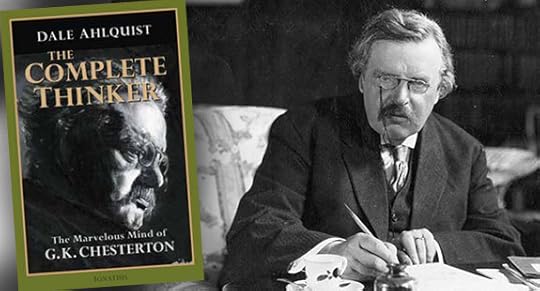
G.K. Chesterton, the Complete Thinker | An Interview with Dale Ahlquist | Catholic World Report
The author of The Complete Thinker: The Marvelous Mind of G.K. Chesterton discusses relativism, good thinking, bad thinking, global economics, and more.
Dale Ahlquist
is president of the American Chesterton Society. Through his popular television
series, The Apostle of Common Sense, as well as his many books and
lectures, he has helped foster a renewed interest in the works of G.K.
Chesterton 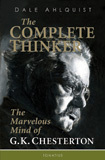 (1874-1936), the prolific English essayist, novelist, poet,
(1874-1936), the prolific English essayist, novelist, poet,
apologist, pundit, critic, and commentator. Ahlquist has authored and
contributed to several books on Chesterton, including Common Sense 101:
Lessons from G.K. Chesterton, G.K. Chesterton: The Apostle of Common Sense,
and In Defense of Sanity: The Best Essays of G.K. Chesterton. He recently spoke with Catholic World Report about his new
book, released today by Ignatius Press, The
Complete Thinker: The Marvelous Mind of G. K. Chesterton.
CWR:
In the introduction to your latest book, you write of Chesterton: “In an age of
relativism, he speaks in absolutes.” Although relativism has made its
reputation in the late 20th century, isn’t it true that Chesterton dealt with
many forms of it in his own time?
Dale
Ahlquist: In Chesterton’s third novel, The
Ball and the Cross, published in 1909, he stages a debate between a monk
named Michael and a professor named Lucifer. Even the symbolically challenged
should figure out who they represent. At one point in the debate, Lucifer
attempts to parry one of Michael’s points with the comment, “Of course,
everything is relative…” So you see how long ago Chesterton is already aware of
this argument forming, and he puts the argument into the mouth of the devil.
Just as Chesterton warned that the popularization of Darwin would lead to a
belief in mindless progressivism in politics, he warned early on that the
popularization of Einstein would lead to an acceptance of relativism in
philosophy.
CWR:
You state, “Chesterton’s great accomplishment is that in addition to writing
about everything, he puts it all together. He is a complete thinker.” How, in
light of Chesterton’s writings, does one go about being a complete thinker?
October 17, 2012
Benedict XVI embarks on audiences about the virtue of faith
Traditionally, based on St. Paul's remarks in 1 Corinthians 13, the theological virtues have been ordered faith, hope, and then love: "So faith, hope, love abide, these three; but the greatest of these is love" (1 Cor 13:13). Pope Benedict XVI has been working his way, so to speak, through the virtues in the opposite order, beginning with an encyclical focused on love, or charity ("Deus Caritas Est"), in December 2005, then one about hope ("Spe Salvi"), given in November 2007. Now, having marked the start of the Year of Faith last week—a year coinciding with the 50th anniversary of the opening of Vatican II—he has commenced a series of general audiences on faith. The three theological virtues are not, of course, in competition, even though charity, as St. Paul wrote, is the greatest, as God is love and we are called to live eternally in communion with the source of love, the Trinity.
My guess is that the Holy Father wished to begin with the end, the ultimate goal of life and creation: communion in charity with the Father, Son, and Holy. Then he turned to virtue that keeps us pressing on and focused on that heavenly goal while on pilgrimage on earth: hope. And now he focuses out attention on the "rubber meets the road" virtue of faith, which is the gateway into life in Christ, a gift that must be freely accepted, then appropriated, and then continually deepended and enriched through the sacraments, the Word of God, right practice, and the transformation of the mind and heart. Below is the Vatican Information Service report on today's general audience commencing the catechesis on faith.
Vatican City, (VIS) - During his general audience this morning,
Benedict XVI began a new series of catecheses which will cover the
period of the Year of Faith. The Year, he said, is intended "to renew
our enthusiasm at believing in Jesus Christ, ... to revive the joy of
walking along the path He showed us, and to bear concrete witness to the
transforming power of the faith".
With his catecheses over
coming months the Holy Father hopes to help people understand that the
faith "is not something extraneous and distant from real life, but the
very heart thereof. Faith in a God Who is love and Who came close to
mankind by taking human flesh and giving Himself on the cross to save us
and open the doors of heaven for us, is a luminous sign that only in
love does man's true fullness lie", he said. "Where there is domination,
possession and exploitation, ... man is impoverished, degraded and
disfigured. Christian faith, industrious in charity and strong in hope,
does not limit life but makes it human".
"God has revealed
Himself with words and actions throughout the long history of His
friendship with man. ... He came forth of heaven to enter the world of
men as a man, that we might meet and hear Him; and from Jerusalem the
announcement of the Gospel of salvation has spread to the ends of the
earth. The Church, born of Christ’s side, has become the herald of a new
hope. ... Yet, from the very beginning, the problem of the 'rule of
faith' arose; in other words, the faithfulness of believers to the truth
of the Gospel ... to the salvific truth about God and man to be
safeguarded and handed down".
The essential formula of the faith,
the Pope explained, is to be found in the Creed, in the Profession of
the Faith, whence develops "the moral life of Christians, which there
has its foundation and its justification. ... It is the Church’s duty to
transmit the faith, to communicate the Gospel, so that Christian truths
may become a light guiding the new cultural transformations, and
Christians may be able to give reasons for the hope that is in them.
"We
are living today in a society that has changed profoundly, even with
respect to the recent past, a society in continuous flux", the Holy
Father added. "The process of secularisation and a widespread nihilist
mentality, in which everything is relative, have left a strong imprint
on the collective mentality. ... And while individualism and relativism
seem to dominate the hearts of so many of our contemporaneous, it cannot
be said that believers remain completely immune from these dangers. ...
Surveys carried out on all the continents in preparation for the
current Synod of Bishops on new evangelisation have revealed some of
these dangers: the faith lived passively or privately, the rejection of
education in the faith, the rupture between faith and life".
Benedict
XVI went on: "Christians today often do not even know the central core
of their Catholic faith, the Creed, thus leaving the way open to certain
forms of syncretism and religious relativism, with no clarity about
which truths must be believed and the salvific uniqueness of
Christianity. ... We must go back to God, to the God of Jesus Christ, we
must rediscover the message of the Gospel and cause it to enter more
deeply into our minds and our daily lives.
"In these catecheses
during the Year of Faith I would like to help people make this journey,
in order to regain and understand the central truths of faith about God,
man, the Church, and all social and cosmic reality, by reflecting upon
the affirmations contained in the Creed. And I hope to make it clear
that these contents or truths of the faith are directly related to our
life experience. They require a conversion of existence capable of
giving rise to a new way of believing in God".
Among his
greetings at the end of his catechesis the Pope addressed Polish
pilgrims. "Yesterday", he told them, "on the anniversary of the election
of John Paul II to the See of Peter, we remembered him as a great guide
in the faith, who introduced the Church into the third millennium".
Finally,
in Italian, he had words of greeting for representatives of the "Acting
all together for the Dignity of the Fourth World" Movement, who were in
St. Peter's Square to mark the United Nations International Day for the
Eradication of Poverty. "I encourage you in your commitment to protect
the dignity and rights of people forced to suffer the scourge of
poverty, against which humankind must struggle without cease", said
Benedict XVI.
October 16, 2012
40% off Glenn Dudro's "Employee Pick of the Week"

40% off Glenn Dudro's Pick of the Week*
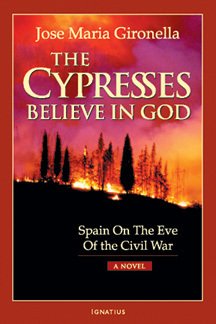
As
we experience the polarized rhetoric of the U.S. presidential election
cycle, a book that gives us much to ponder about how we as Catholics
should participate in civic life is the novel The Cypresses Believe in God ,
a fictional account of the lead up to the Spanish Civil War written by
Jose Maria Gironella in 1953 and reprinted by Ignatius Press in 2005.
The novel begins in 1931 and is set in the town the author’s own birth,
the provincial capital of Gerona. It follows the Alvear family over the
next 5 years as the slow breakdown of Spanish society spirals down into a
brutal civil war. Masterfully, the author explains the major
philosophic movements of the age (anarchism, communism, socialism,
Catholicism, monarchism, existentialism, and others) as they collide in
the Alvear family and the microcosm that Gerona is of Spain. The author
puts a human face (though not always pretty!) on the factions fighting
in the confused alliances in the Spanish Civil War and their
counterparts in the rest of Europe that are planting the seeds of the
coming world war.
The real power of the novel, however, is in the moving depictions of the
Catholic faith that permeates the life of the Alvears in both the
ordinary and the extraordinary events of the times. Never sappy or
triumphalistic, the author draws some of
 the most powerful scenes of
the most powerful scenes of remorse and forgiveness for sins, I think, in all of literature.
Altogether, this is a thoroughly educational , entertaining and edifying
novel.
Glenn
Dudro has been directing the finances, accounting and information
systems at Ignatius Press since 1994. His wife, Vivian, also works for
Ignatius as a senior editor. They have four mostly grown children and
live in San Francisco
*Employee
Pick of the Week program features savings of 40% off a book, movie, or
compact disc personally chosen and recommended by an Ignatius Press
employee. Each week, an Ignatius Press employee will select a favorite
book, movie, or other Ignatius Press product and write a few sentences
about why he or she thinks customers will enjoy the particular
selection. A short bio of the selecting employee will also be included,
giving customers a chance to learn a bit more about the people who are
Ignatius Press.
Pre-order volume 3 of "Jesus of Nazareth"*

Pre-order volume 3 of Jesus of Nazareth*
Plus huge discounts on a number of books from Ignatius Press! These prices are available online only through Ignatius.com
The
final volume of Pope Benedict XVI's trilogy on Jesus of Nazareth will
be available in December. Pre-order your copy today and receive 20% off!
Ignatius Press is also offering large discounts on other great books
from the Pope, and author authors such as Paul Badde, T. M. Doran and Fiorella de Maria Nash. Stock up on Christmas gifts and treat yourself to a book or two at unbeatable prices!
*The discount on Jesus of Nazareth: His Infancy and Childhood is only available until midnight EST on October 23, 2012
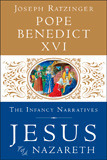 Jesus of Nazareth
Jesus of Nazareth
His Infancy and Childhood
Pope Benedict XVI
The momentous third and final volume in the Pope's international
bestselling Jesus of Nazareth series, detailing the stories of Jesus'
infancy and boyhood. This third part of the trilogy dedicated to Jesus
of Nazareth begins with the Gospels and concludes with the contemporary
man.
Regular price: $20.00, sale price: $16.00
 Jesus of Nazareth
Jesus of Nazareth
Holy Week: From the Entrance Into Jerusalem To The Resurrection
Pope Benedict XVI
What happened in the final week of Jesus of Nazareth's earthly
life? This is a book for Christians—Catholics, Protestants, Orthodox—as
well as other believers and nonbelievers. Also available as an e-book and audio download.
Regular price: $24.95, sale price: $12.50
Study Guide:
Regular price: $7.95, sale price: $3.95
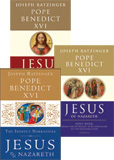 Jesus of Nazareth 3 Volume Set
Jesus of Nazareth 3 Volume Set
This set includes all three volumes of Jesus of Nazareth written by Pope Benedict XVI.
Regular price: $61.95, sale price: $39.95
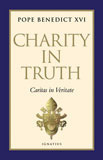 Charity in Truth
Charity in Truth
Caritas in Veritate
Pope Benedict XVI
A deluxe edition of the Pope's third Encyclical, which explains the Catholic approach to the economy. Also available as an e-book and audio download.
Regular price: $14.95, sale price: $7.50
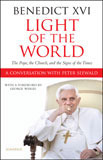 Light Of The World
Light Of The World
Peter Seewald, Pope Benedict XVI
Taken from a series of interviews, this book tackles head-on some of the greatest issues facing the world of our time. Also available as an e-book and audio download.
Regular price: $19.95, sale price: $9.95
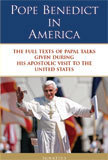 Pope Benedict in America
Pope Benedict in America
Pope Benedict XVI
This book contains all of Benedict's major addresses in a handy slim deluxe hardcover edition.
Regular price: $14.95, sale price: $7.50
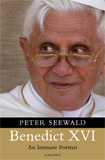 Benedict XVI
Benedict XVIAn Intimate Portrait
Peter Seewald
Journalist Peter Seewald draws a portrait of this brilliant
theologian who has put his life entirely at the service of the Catholic
Church. Illustrated.
Regular price: $24.95, sale price: $12.50
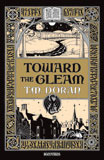 Toward the Gleam
Toward the Gleam
A Novel
T. M. Doran
Between the two world wars, on a hike in the English countryside,
Professor John Hill takes refuge from a violent storm in a cave. There
he makes an astonishing discovery—an ancient manuscript housed in a
cunningly crafted metal box.... Also available as an e-book and audio download.
Regular price: $19.95, sale price: $9.95
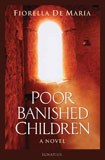 Poor Banished Children
Poor Banished Children
A Novel
Fiorella de Maria Nash
An explosion is heard off the coast of seventeenth century
England, and a woman washes up on the shore. She has a confession to
make and a story to tell, but who is she and from where has she come? Also available as an e-book and audio download.
Regular price: $16.95, sale price: $8.50
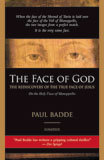 The Face of God
The Face of God
Paul Badde
Journalist Paul Badde was intrigued when he heard of a mysterious
image in the remote Italian village of Manoppello—an image of a man's
face on sea silk cloth. When laid over the image of the face on the
Shroud of Turin, it forms a perfect match. Paul Badde takes the reader
along on a thrilling journey of discovery as he travels to research this
remarkable relic. Illustrated. Also available as an e-book and audio download.
Regular price: $19.95, sale price: $9.95
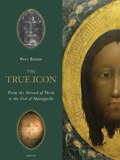 The True Icon
The True Icon
Paul Badde
Paul Badde sets out on a journey through Europe and the Holy Land
as he traces the rich history of the Shroud. With the investigative
skills of a seasoned journalist, Paul Badde uncovers many of the
mysteries surrounding the Shroud and also researches another relic
honored as a burial cloth of Christ-the Veil of Manoppello, which bears
the image of the Holy Face. Lavishly illustrated. Also available as an e-book.
Regular price: $22.95, sale price: $11.50
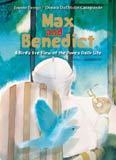 Max and Benedict
Max and Benedict
Jeanne Perego
This lovely illustrated book for children (of all ages!) is a
sequel to Joseph and Chico. It is aimed at children but in a way that
even adults will enjoy. It takes up the story of Benedict's XVIs new
life as the Pope. Also available as an audio download.
Regular price: $17.95, sale price: $8.95
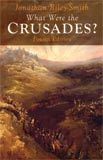 What Were the Crusades?
What Were the Crusades?
Jonathan Riley-Smith
Now in its fourth edition, this classic starting point for the
study of the crusading movement has been updated to take into account
the latest developments in the field.
Regular price: $14.95, sale price: $7.50
Catholic World Report
History's View of Vatican II
by Michael J. Miller
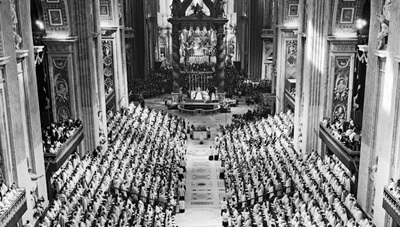
The who, what, where, when, and why of the Council
The famous black-and-white photograph of the Second Vatican Council in
session, taken from a high balcony at the back of Saint Peter�s
Basilica, shows more than 2,000 Council Fathers standing at their places
in slanted stalls that line the nave, with more than a dozen rows on
either side. It resembles nothing so much as a gargantuan monastic
choir�unless it puts you in mind of the British Parliament with the
dimensions quadrupled. Contemporary perceptions of the Council varied
widely, partly because of the extensive media coverage. Although it
promulgated a dogmatic constitution on the Church, Lumen Gentium,
Vatican II was not a �constitutional convention.� An ecumenical council
can teach about the Church but cannot modify a divine institution, any
more than a pope can invent a new doctrine or change one of the Ten
Commandments.
Homiletic & Pastoral Review
The Year of Faith: Recovering a Culture that is Genuinely Catholic
by Arland K. Nichols
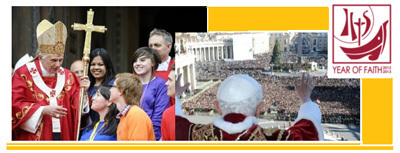
On October 11, Pope Benedict called for a �Year of Faith� to
�rediscover the journey of faith� in the midst of �a profound crisis of
faith that has affected many people.�
Standing like dust-covered artifacts of a by-gone age, the Catholic
Churches of Europe see only a small portion of baptized Catholics on any
given Sunday. A majority of married Catholics in the United States, and
Europe, use contraception; many support a politically correct
redefinition of marriage; and believe abortion is justified; in at least
some circumstances. Any survey of Catholics reveals that a majority do
not live in accord with, or simply do not know, their Catholic faith.
St. Ignatius of Antioch and the Early Church

St. Ignatius of Antioch and the Early Church | Kenneth D. Whitehead | From One, Holy, Catholic, and Apostolic: The Early Church Was The Catholic Church
Sometime around the year 107 A.D., a short, sharp persecution of the
Church of Christ resulted in the arrest of the bishop of Antioch in
Syria. His name was Ignatius. According to one of the harsh penal
practices of the Roman Empire of the day, the good bishop was condemned
to be delivered up to wild beasts in the arena in the capital city.
The insatiable public appetite for bloody spectacles meant a
chronically short supply of victims; prisoners were thus sent off to
Rome to help fill the need.
So the second bishop of Antioch was sent to Rome as a 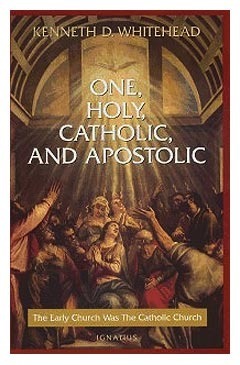
condemned prisoner. According to Church historian Eusebius (ca. 260-ca.
340), Ignatius had been bishop in Antioch for nearly forty years at
the time of his arrest. This means that he had been bishop there while
some of the original apostles were almost certainly still alive and
preaching.
St. Ignatius of Antioch was conducted first by land
from Syria across Asia Minor (modern Turkey). He was escorted by a
detachment of Roman soldiers. In a letter he sent ahead to the Church
of Christ in Rome, this bishop described his ardent wish to imitate the
passion of Christ through his own coming martyrdom in the Roman
Colosseum. He warned the Christians in Rome not to try to save him. He
also spoke of his conflicts with his military escort and of their casual
cruelties, describing his guards as "ten leopards". The discipline of
the march cannot have been unrelieved, however, since Ignatius was
permitted to receive delegations of visitors from local Churches in the
cities of Asia Minor through which the escorts and Ignatius passed
along the way (To the Romans, 5:1).
In
Smyrna (modern Izmir), St. Ignatius met, not only with the bishop of
that city, St. Polycarp, but also with delegations from the neighboring
cities of Ephesus, Magnesia, and Tralles. Each delegation was headed
by a local bishop. Ignatius wrote thank-you letters to the Christians
in each of these cities who had visited the notable but shackled
bishop-prisoner. Chiefly through these letters, St. Ignatius of Antioch
is known to us today.
Establishing these letters, written in
Greek, as authentic and genuinely from the first decade of the second
century was one of the triumphs of nineteenth-century British
scholarship. Without them, this bishop of Antioch might have remained
no more than a name, as obscure as many another early Christian bishop.
Escorted on to the Greek city of Troas on the Aegean Sea,
Ignatius wrote yet another letter to the Church at Smyrna, through
which he had passed. He also wrote personally to Bishop Polycarp of
that city. Finally, from Troas he wrote still another letter to the
Philadelphians; the local Church of Philadelphia had despatched two
deacons who overtook his party at Troas.
Shortly after
writing these seven letters to Churches in Asia Minor, St. Ignatius of
Antioch was taken aboard ship. The remainder of his journey to Italy
was by sea. Tradition holds that he won his longed-for martyrdom in the
Roman amphitheater during the reign of Emperor Trajan (98-117).
But the letters he left behind afford us a precious and remarkable
picture of what that Church was like not even two full generations
after issuing from the side of Jesus Christ on the Cross.
The adult life of St. Ignatius of Antioch as a second-generation Church
leader almost exactly spanned the period of transition between the end
of the first Christian generation and the beginning of the third. Thus,
his witness about the nature of the Church of his day is of the most
profound and fundamental importance.
What was the Church like
around the year 107 A.D.? The Church had already spread far and wide
since the days of the apostles. St. Ignatius was conducted over a good
part of what, today, is Turkey, encountering local Churches in most
major towns. At the head of each of these Churches was a principal
leader, a bishop. The geographical spread of individual local Churches,
each headed by a bishop, is obvious from the fact that Ignatius was
met by delegations headed by bishops from each sizeable town along the
route.
That St. Ignatius was met by these "official"
delegations indicates that local Churches were in close touch with one
another. They did not see themselves as independent, self-selected,
self-governing congregations of like-minded people; they saw themselves
as linked together in the one body of Christ according to an already
firmly established, well-understood system, even though they happened
to be geographically separated.
The solidarity with which they
all turned out to honor a prisoner being led to martyrdom, who also
happened to be the bishop of Antioch, tells us something about their
respect for the incumbent of that office. Antioch was to become one of
the great patriarchal bishoprics of the Church of antiquity, along
with Alexandria and Rome--and, later, Constantinople.







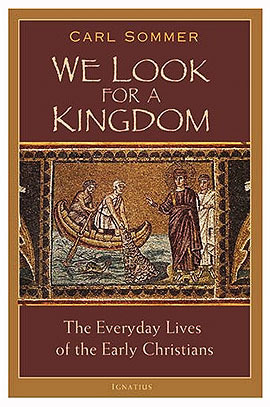 [image error]
[image error] 
The letters of St. Ignatius are even more pointed concerning the role
that a bishop ("overseer") held in the early Church. The modern reader
may be startled at the degree to which these letters exalt the role of
the bishop. "It is essential to act in no way without the bishop",
Ignatius wrote to the Trallians. "... Obey the bishop as if he
were Jesus Christ" (2:2,1). "Do nothing apart from the bishop", he
wrote to the Philadelphians (7:2). To the Smyrnaeans, he gave the same
advice: "You should all follow the bishop as Jesus Christ did the
Father .... Nobody must do anything that has to do with the Church
without the bishop's approval" (8:1).
The New Testament shows
the apostles appointing others besides themselves to offices in the
Church. Peter and the other apostles at Jerusalem very quickly decided
to appoint deacons to assist them (cf. Acts 6: 1-6). Paul similarly
placed someone in authority in the Churches he founded (cf. Acts
14:23; 2 Tim 1:6). These ecclesiastical appointments were carried out
by means of a religious rite: the laying on of hands, either by those
who already had authority conferred on them by Christ (the apostles) or
those on whom they had conferred authority by the laying on of hands. These rites were sacramental ordinations.
For a period of time in the early Church there seems to have been no
entirely clear terminology designating these ordained Church officers
or ministers. St. Paul spoke of bishops and deacons (Phil 1:1), though
he also mentions other offices, such as apostles, prophets, and
teachers (1 Cor 12:29). St. James spoke of elders (5:14). In the Acts
of the Apostles (e.g., 11: 30), we hear many times of elders or presbyters. Sometimes the designations bishop and elder seem to have been used interchangeably.
In the course of the second half of the first century, however, a
consistent terminology for these Church offices was becoming fixed. The
letters of St. Ignatius of Antioch make clear that leadership in the
Christian community, in all the Churches, is exercised by an order of
"bishops, presbyters, and deacons" (To the Trallians 3:2; To Polycarp 6:1). Of these designations, bishop comes from the Greek episkopos, meaning "overseer"; presbyter from the Greek presbyteros, "elder"; and deacon from the Greek diakonos, "servant" or "minister".
Thus, from that time on, these were the offices in what was already an
institutional, hierarchical Church (this is not to imply that the
Church was ever anything but institutional and hierarchical, only that
the evidence for these characteristics had become unmistakably clear by
this time).
By the way, the term priest (Greek: hierus)
does not seem to have been used at first for the Christian presbyter;
the nonuse of this particular term in the earliest years of the Church
was due to the need to distinguish the Christian priesthood of the new
dispensation from the Jewish Temple priests, who were still
functioning up to the time of the destruction of Jerusalem and the
Temple by the Romans in the year 70 A.D. After that time, the use of
the word priest for those ordained in Christ began to be more and more common.
St. Ignatius of Antioch did not know of any such thing as a "Church"
that was merely an assemblage of like-minded people who believed
themselves to have been moved by the Spirit. The early Christians were
moved by the Spirit to join the Church, the established visible,
institutional, sacerdotal, and hierarchical Church-the only kind St.
Ignatius of Antioch would ever have recognized as the Church.
And it was for this visible, institutional, sacerdotal, and
hierarchical Church--an entity purveying both the word and sacraments
of Jesus--that this early bishop was willing to give himself up to be
torn apart by wild beasts in the arena. He wrote to St. Polycarp words
that were also meant for the latter's flock in Smyrna: "Pay attention to
the bishop so that God will pay attention to you. I give my life as a
sacrifice (poor as it is) for those who are obedient to the bishop, the
presbyters, and the deacons" (6:1). To the Trallians he wrote: "You
cannot have a Church without these" (3:2).
St. Ignatius
certainly did not fail to recognize that, in one of today's popular but
imprecise formulations, "the people are the Church." His letters were
intended to teach, admonish, exhort, and encourage none other than "the
people". But he also understood that each one of "the people" entered
the Church through a sacred rite of baptism, and thereafter belonged to
a group in which the bishop, in certain respects and for certain
purposes, resembled, on the one hand, the father of a family and, on
the other, a monarch--more than some democratically elected leaders.
Related IgnatiusInsight.com Articles, Book Excerpts, and Interviews:
• Selections from Jesus, The Apostles, and the Early Church | Pope Benedict XVI
• A Short Guide to Ancient Heresies | Kenneth D. Whitehead
• Studying The Early Christians: The Introduction to We Look For the Kingdom | Carl J. Sommer
• The Everyday Lives of the Early Christians | An interview with Carl J. Sommer
• Church and State in Early Christianity | Hugo Rahner, S.J.
• His Story and the History of the Church | An Interview with Dr. Glenn W. Olsen
• Are We at The End or The Beginning? | Dr. Glenn Olson
• Who Is A Priest? | Fr. Benedict Ashley, O.P.
• The Church Is the Goal of All Things | Christoph Cardinal Schönborn
• St. Peter and the Primacy of Rome | Stephen K. Ray
• Church Authority and the Petrine Element | Hans Urs von Balthasar
Kenneth D. Whitehead is a former U.S. Assistant
Secretary of Education. He has authored or coauthored several
books, as well as many articles for leading Catholic periodicals,
and is the translator of some twenty published books.
Commemorating "Summorum Pontificum" in the Eternal City
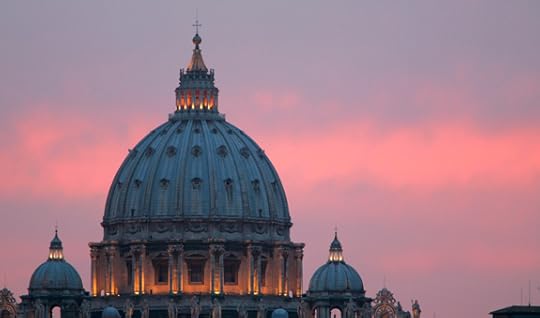
Commemorating Summorum Pontificum in the Eternal City | Alberto Carosa | Catholic World Report
In November, traditional Catholics will gather in Rome for the Year of Faith and Mass at St. Peter’s Basilica.
Edward Pentin’s September
21 article for the National Catholic Register—on
rumors that Pope Benedict XVI might celebrate Mass in the extraordinary form at
the Vatican on November 3 for a group of traditionalist pilgrims from around
the world—helped to kindle media interest in the upcoming pilgrimage, of which the
Mass at St. Peter’s is the crowning event. While the rumors have proven unfounded—it
was announced last week that Cardinal Antonio Cañizares Llovera, prefect of the
Congregation for Divine Worship and the Discipline of the Sacraments, will be
the celebrant of the November 3 Mass—the three-day gathering of supporters of
the motu proprio Summorum Pontificum is expected
to draw international attention to the growing number of Catholics devoted to
the older form of the Roman Rite.
Father Claude Barthe
is the official chaplain of the pilgrimage, which is being organized by the Coetus
Internationalis Pro Summorum Pontificum,
a group that brings together the traditionalist Catholic organizations from
different countries. Father Barthe has graciously granted this exclusive
interview about the upcoming pilgrimage.
CWR: Father, there
are people who would like to know a bit more about you. Can you please give us
your brief curriculum vitae?
Father
Claude Barthe: I was born in 1947 in Fleurance, in the southwest of
France. My vocation goes back to my Catholic childhood. I studied at the
Catholic Institute of Toulouse, as a diocesan seminarian, but the
post-conciliar revolution forced me to leave the seminary. Then I studied
history and law, appreciating the traditional liturgy, so much so that I went
to Ecône where I was ordained a priest by Archbishop Lefebvre in 1979.
Afterward I sided with the traditionalist “hardliners,” and then increasingly
Roman, eventually becoming a diocesan priest. I also teach liturgy.
CWR: But how did
the idea of this traditional pilgrimage come about, and why were you chosen
as its chaplain?
The Church and Social Programs
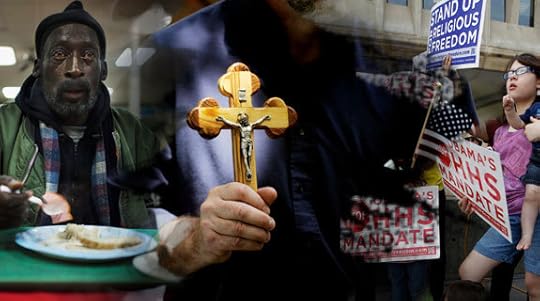
The Church and Social Programs | James Kalb | Catholic World Report
Christians in the US are not under hard totalitarianism, but we are in the midst of a struggle for the soul of our country.
A
couple of months ago I
noted that the Church generally supports and cooperates with political
authorities. She interprets their efforts charitably, supports whatever can be
justified, and, when some particular measure is undeniably bad, tries to show what
would be better.
All
that’s obvious good sense when Christian or natural law principles are
generally accepted, or when government is mostly a matter of guarding basic
social functions. In such settings, it makes sense to accept that government,
however infected by human weakness, is basically natural and good. Hence the
alliance of throne and altar in old Europe, and hence the Al Smith Dinner in 20th-century
New York.
To
what extent does that approach make sense today? Modern thought tends toward
the radical and transformative. It wants to reject the authority of nature,
custom, and Christianity, and treat man as left to his own devices. It tells
us, for example, that the human body has no natural meaning, so we are free to
do with it what we will. If we want to redefine human life or marriage so they
fit our plans better, that’s what we should do. That’s the technological view
of reason that dominates serious mainstream political discussion today. It’s
the reason Choice and Change, which tell us that the point of politics is
remaking the world in accordance with human decision, have been so successful
as slogans.
The
influential people who do the choosing are OK with choice and change as supreme
principles, but the Church has problems with them. A government truly based on
choice and change would be very different from the kind of government she has
habitually supported. It would be a system of force in the service of
willfulness, and thus a system of organized violence against man and nature. As
such, it would be essentially bad, even though it might do some good things.
In
the last century Russia and Germany demonstrated how politics based on will can
work out when the principle is taken with unmixed seriousness. Liberals are
aware of the problem, but expect the principle of equal treatment to keep their
system from becoming tyrannical. If everybody’s desires have to be treated
equally, no one can tyrannize over anyone else, and the specter of
totalitarianism is exorcised. Indeed, liberals believe their solution to
oppression is the only one possible. A will’s a will, or so a liberal
technocrat might say, so Catholics and others who deny the equal claim of all
wills to satisfaction must be tyrants who want to impose their own will on
everything.
Even
so, the liberal principle of equal willfulness can’t be relied on to avoid
tyranny.
Continue reading at www.CatholicWorldReport.com.
October 15, 2012
Two notable, upcoming events in the Los Angeles area
First, in early November:
The Magnificat Foundation,
in association with the Diocese of Orange, is pleased to announce “The Magnificat Day of Faith” on November 3,
2012, at the Crystal Cathedral, the future Christ Cathedral, in Garden Grove,
California.
This October the Church will
enter into the Year of Faith proclaimed by Pope Benedict XVI. In response, the Magnificat Foundation is offering a
unique and historic day of prayer and communion—the first major Catholic
gathering at the future Christ Cathedral. Under the leadership of Pierre-Marie
Dumont, president of the Magnificat
Foundation, the Day of Faith is a celebration of what the pope calls
“the joy of believing” and will feature a series of presentations highlighting
the faith in its many facets. Keynote addresses will be delivered by Mrs. Clara
Gaymard, daughter of the Servant of God Jerome Lejeune, the father of modern
genetics, and Fr. Peter John Cameron, o.p.,
editor-in-chief of Magnificat, the
monthly Catholic worship aid. Other speakers include Dominican Father Michael
Morris, professor of art history at Berkeley and a regular contributor to Magnificat, and Jesuit Father James
Kubicki, national director of the Apostleship of Prayer. Father Robert Reed,
president of the CatholicTV Network, will serve as master of ceremonies.
Music and song will be at the
heart of this family Day of Faith. Music director Christopher Vath, a composer
and choir director who has given a private piano recital for Pope Benedict XVI,
will direct both the choir (with soloists) and the assembly in singing Morning
Prayer, the Angelus, and Evening Prayer,
accompanied by the Cathedral’s organ (the fifth largest in the world). Other
musical offerings include a special performance of Bach’s Magnificat by the acclaimed Pacific Chorale led by artistic
director John Alexander, and a rendition of the Benedictus by the De Angelis vocal ensemble. The Day will
culminate with the singing of the Salve Regina by the choir and the assembly.
“The Magnificat Day of Faith” is a special opportunity to observe
the Year of Faith and experience how “faith expands our hearts in hope” (Pope
Benedict XVI).
For more information, and to
register, please visit: www.magnificatday.com
And in December:
"Christmas 'Round the World" benefit concert
Saturday December 8, 2012 at 2 P.M., Wilshire Ebell Theater, Los Angeles, California
Featuring the combined choral efforts of the Kobzar Ukrainian National Choir, the Yevshan Ukrainian Choral Ensemble of New England, selected members of the Trembita and Koliada Ukrainian Choirs of San Francisco and the Los Angeles Doctors Symphony Orchestra. Never before have Ukrainian artists both both sides of the country joined together for such an inspirational concert program. For your enjoyment, several guest soloists including Elin Carlson of the Los Angeles Opera Company, Stefan Szkafarowsky of the New York Metropolitan Opera and Ivanna Taratula of the L'viv Opera Company will be joining the 175 + members of the choir and orchestra. Also attending will be Hollywood starlets of Ukrainian descent.
All the performers are generously donating their talent to assist the Ukrainian Catholic Education Foundation to raise funds for the Ukrainian Catholic University. All proceeds from this Benefit Concert are being donated to the Ukrainian Catholic Education Foundation.
Tickets may be purchased by calling our ticket hotline at 909-860-2102. For additional information please contact Gregory Hallick at ghallick@aol.com or by calling 951-234-2939. Poster and additional information online here.
Carl E. Olson's Blog
- Carl E. Olson's profile
- 20 followers


